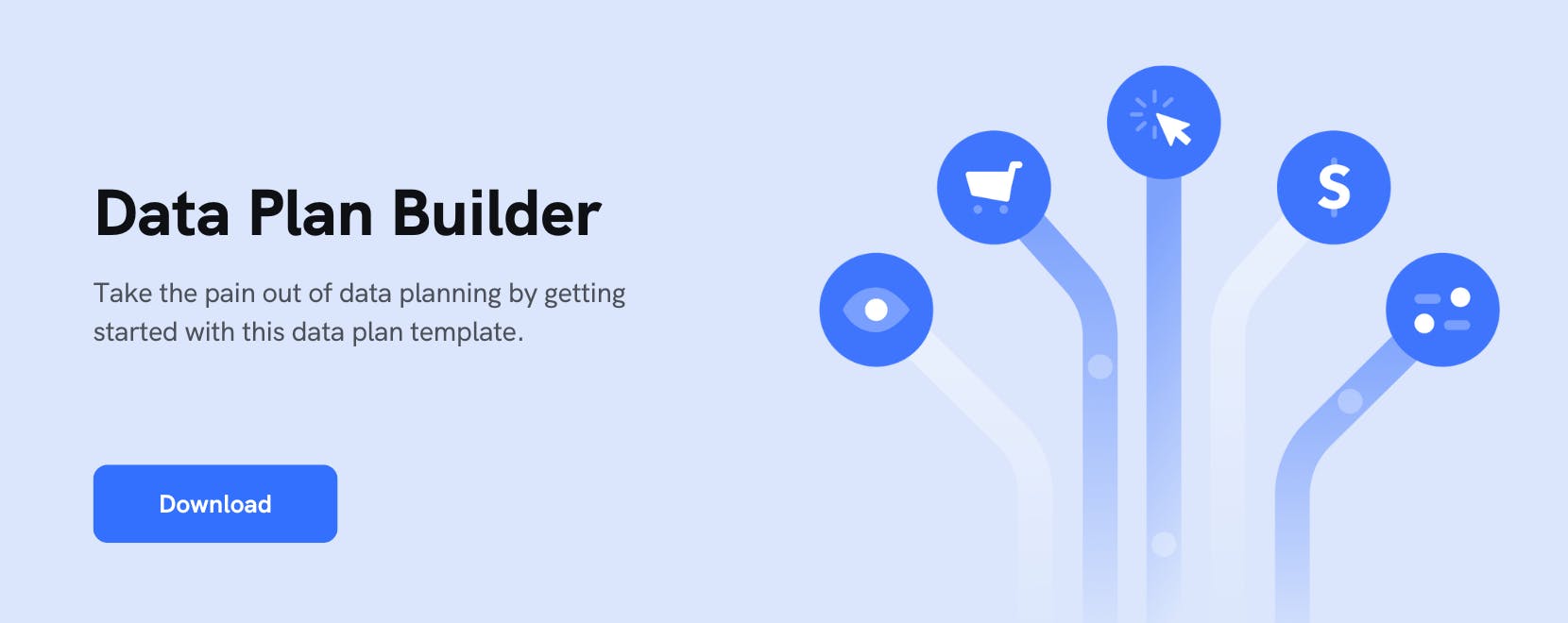How to assess your organization's customer data maturity
Successful personalization at scale requires intentional planning around customer data management, process, and tooling. Learn more about customer data maturity, and why it’s important for increasing the ROI of your MarTech stack.

Investing in customer data is a top priority for marketing leaders. The 2022 Gartner CMO Spend and Strategy Survey found that marketers who reported using customer data to heavily influence business decisions are 1.6 times more likely to see greater revenue growth in their organization.
But despite hopeful ambitions, not all organizations have actually been able to use customer data to improve business results. The reality is that highly data-driven organizations, such as Amazon and Netflix, are outliers. Many marketing departments are still trying to make sense of the customer data they’re collecting, reduce the manual work required to support customer data processes, and figure out how to use customer data to increase customer value.
A 2022 CMO Council report, The High-Velocity Data Marketer, surveyed 300 marketing leaders across industries and geographies and found that although 80% of leaders said data, analytics and insights are “very important to winning and retaining customers,” nearly two-thirds were only moderately confident (or worse) in their data systems. Furthermore, in North America, just 28% of respondents reported being very confident in being able to use their data systems to win and retain customers.
Although it’s easier than ever to collect customer data today, translating this data into tangible business outcomes remains a challenge. To prevent your customer data set from becoming a drain on time and resources (or a data swamp), it’s important to lay a solid, scalable customer data infrastructure.
Laying this foundation pays dividends, as is evidenced by companies that have achieved significant results after solving these infrastructure-level challenges. Burger King, for example, leveraged real-time customer data and best-in-class tools to deliver the award-winning Whopper Detour campaign, which drove 6 million app downloads and a 300% increase in mobile order value.
In our experience working with hundreds of consumer brands across sizes and industries, we’ve observed several characteristics that separate organizations with high customer data maturity from their less data-mature counterparts. These include:
- Speed: How quickly can you move data through the data lifecycle? How easily can non-technical stakeholders access the data they need and activate it in a timely manner?
- Adaptability: How easily can you adjust to changes, both inside the company and in the market ecosystem?
- Trust: How confident are data consumers (Marketers, Product Managers, Data Scientists, and Customer Service Managers) in the accuracy, consistency, completeness, and privacy compliance of your data?
- Collaboration: Do you have cross-functional processes in place to ensure the infrastructure supports the needs of all data stakeholders?
By establishing data processes and tooling that optimize for these characteristics throughout the data lifecycle, you’ll be better situated to maximize the ROI of your MarTech investment.
Level 1: Reactive
At Level 1: Reactive, organizations utilize numerous tools for activation, but are unable to scale their data strategy due to lack of a comprehensive process for data management, ownership, and data integration. Although companies at this stage may be investing heavily in tools to activate their data, they do not yet have the data infrastructure or processes in place to maximize the impact of these systems.
As teams begin to leverage customer data to support better marketing, analytics, and customer service, they often start by implementing tools to support each of these functions independently. For example, Marketing may adopt Iterable to support push messaging, Product may adopt Mixpanel for journey analytics, and Customer Service may adopt Zendesk for support experience. Once these tools are successfully implemented, teams are able to leverage the customer data available in each tool to support their respective goals.
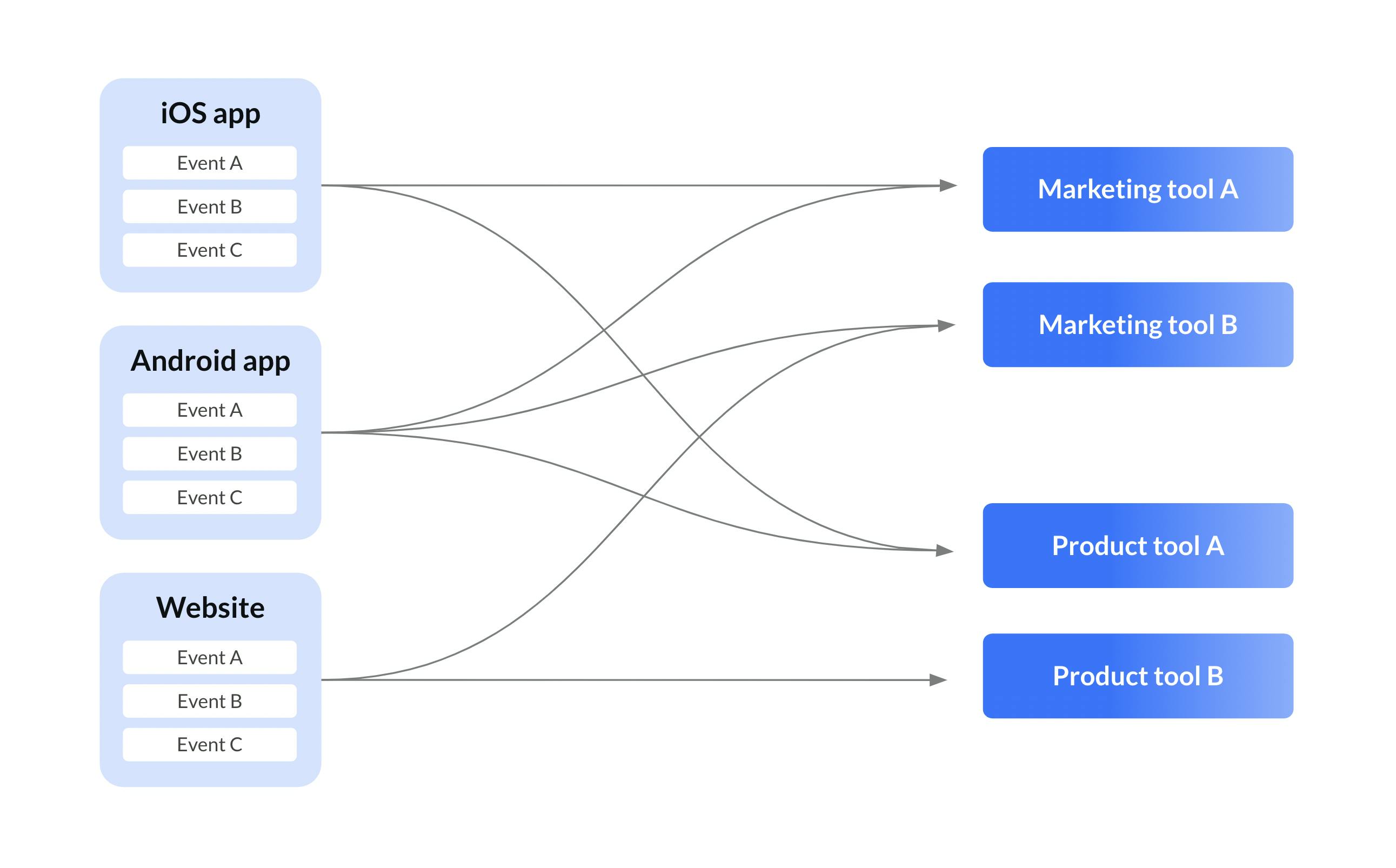
This is undoubtedly a huge step forward from not being able to use customer data at all. But teams operating at this level hit a local maximum. Every time a business team wants to start using a new tool, engineering is required to implement that tool’s SDK on websites and apps, distracting from core development work. And vendor implementations are not a “set-it-and-forget-it” job. Every time business users need a new set of events in a given tool, or whenever a vendor updates their SDK, engineers are required to revisit the implementation.
As numerous data-consuming teams compete for limited engineering resources, engineering is forced to support only the highest-priority data requests, and each tool ends up with a unique, limited customer data set. This restricts the range of use cases in which data users can put the company’s customer data to work, and limits the ROI realized from each individual tool.
In this video, Venmo’s former Head of Data and Analytics explains the reactive customer data workflow their marketing and engineering team found themselves in–before they took the steps to solve it.
A reactive workflow of this nature leads to several challenges. Vendor implementation requests increase in direct proportion to marketing and product programs, making it difficult to scale. When tools need to be replaced, or when fundamental platform shifts occur, manual development is required to keep the tech stack up to date. This both diverts engineers from working on core products and features, and slows down the time-to-value of marketing tools.
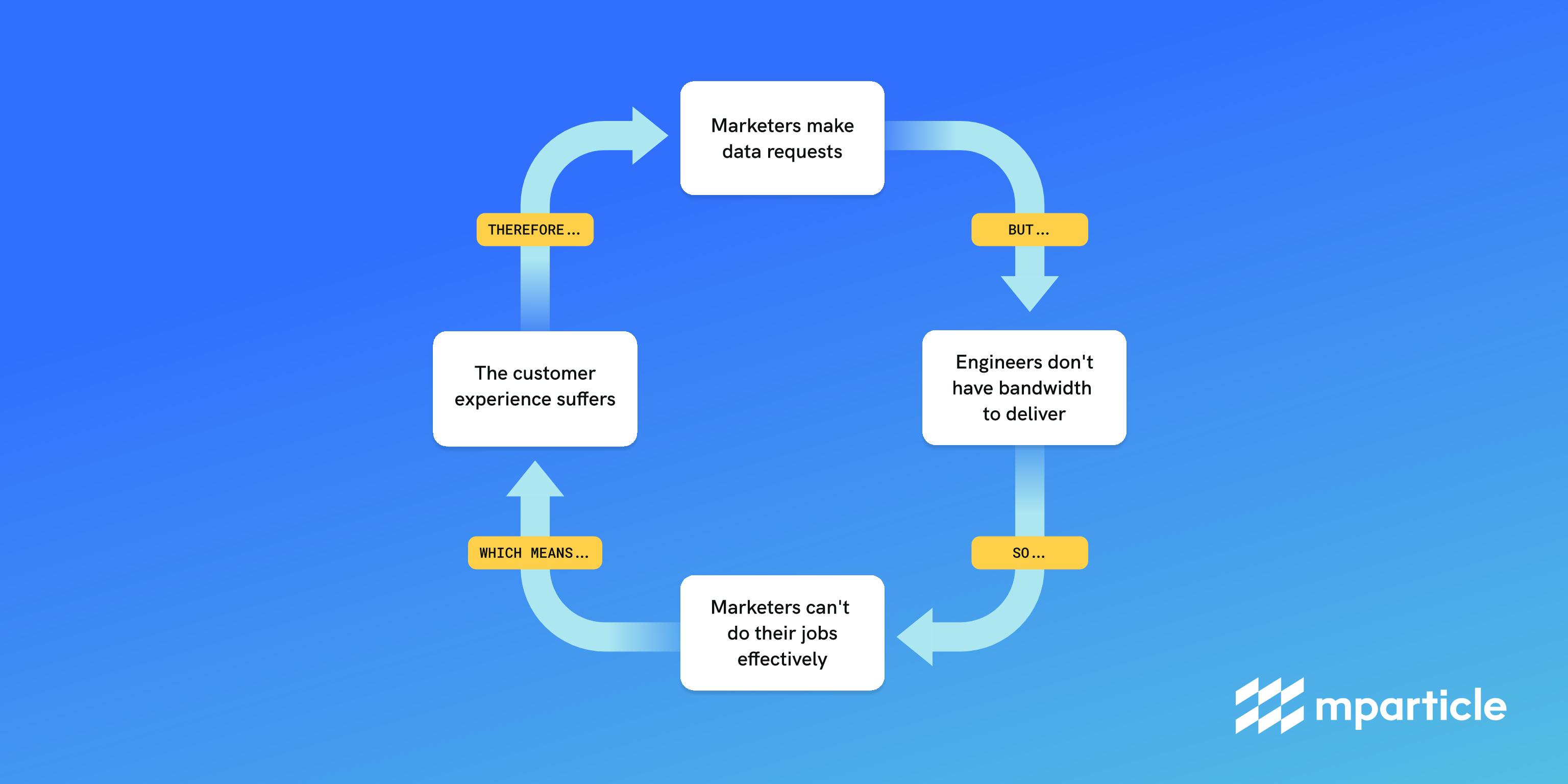
Furthermore, with no central process for enforcing data quality and privacy policies, teams are forced to perform data governance manually in every tool, resulting in redundant, error-prone work and low trust in customer data across the organization. At best, updates related to data privacy can be completed through time-consuming, hands-on tasks. At worst, it’s not possible for teams to make data privacy updates at scale and the company is at risk of violating privacy legislations. Invariably, a lack of centralized processes for data quality and governance leads to bad business decisions, wasted time, and a poor return on data investment.
With distinct, limited data sets in each tool, each team has a limited and incomplete view of the customer. This makes it impossible to orchestrate multichannel experiences at scale and increases the risk of customers receiving out-of-date, irrelevant, or inconsistent messaging across channels.
Due to a lack of ownership of the customer data process, these challenges related to speed, adaptability, trust, and collaboration fall into a tragedy of the commons—they’re everyone’s pain to experience, but no one’s to solve. To progress beyond the reactive level of data maturity, teams need to centralize their customer data infrastructure in a way that relieves engineering workload and facilitates cross-departmental collaboration around customer data.
Level 2: Centralized
Teams progress in customer data maturity when they move from a series of disparate data pipelines to a centralized customer data infrastructure.
At level two of customer data maturity, teams implement an infrastructure that allows them to collect customer data through a single point of collection and forward it out to downstream tools via server-side integrations, akin to a hub-and-spoke model.
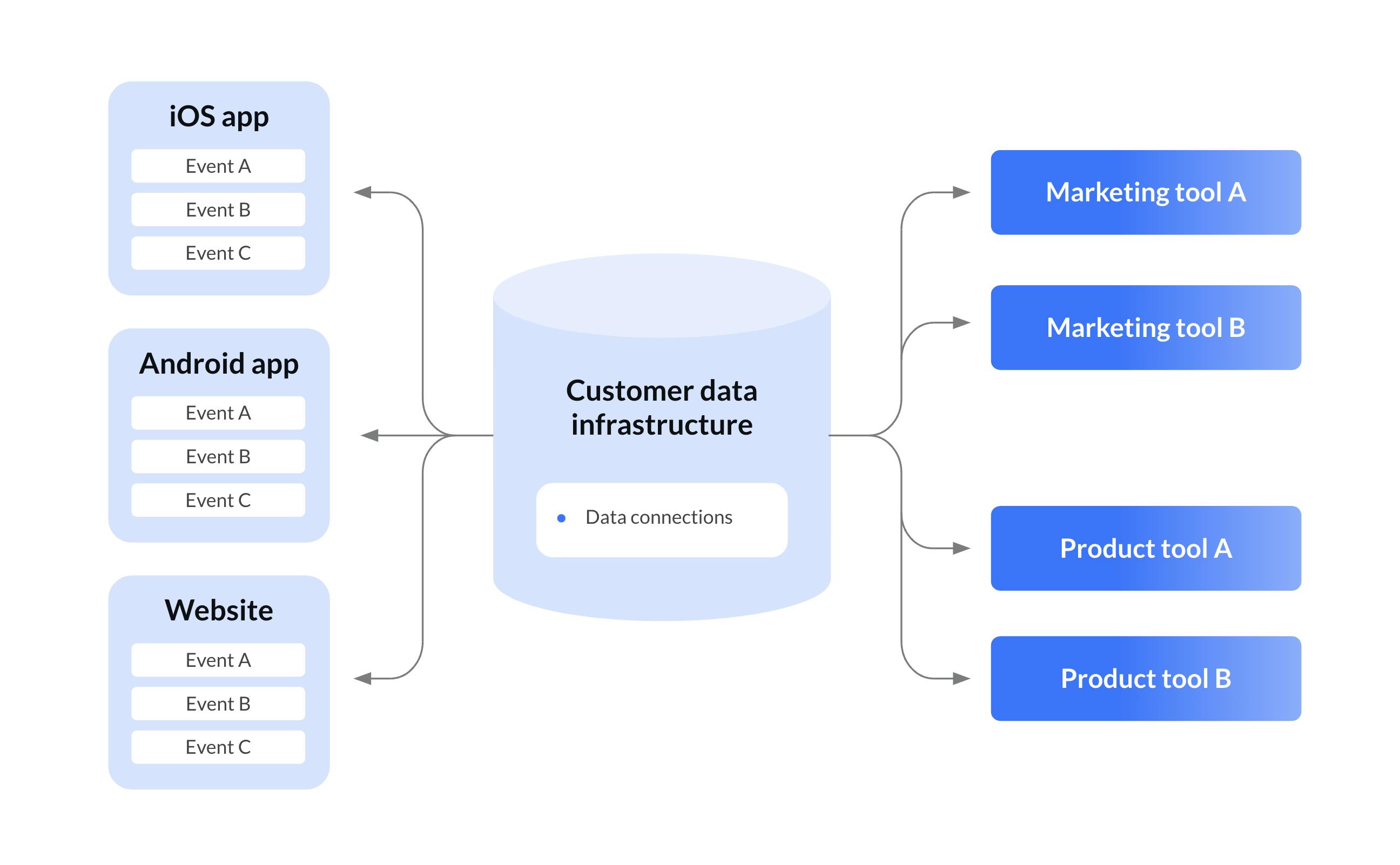
By storing all customer events and attributes in a single system, engineering is relieved of managing a separate SDK for every marketing and analytics tool. Able to access the complete data set in a central system, marketing can connect customer data to their favorite tools using plug-and-play connections. And whenever business teams need to set up a new tool or deactivate an existing tool, all they need to do is update the integration settings in their customer data infrastructure—no additional SDK implementations required.
When deciding what data needs to be collected into the central data infrastructure, stakeholders also have the opportunity to create a data plan. The data planning exercise is a major step forward in customer data maturity itself, as it creates a forum for once disparate data-consuming and data-implementing teams to collaborate on what customer data must be collected to accomplish business priorities. This team can also work together on customer data infrastructure-related decisions such as which tools to implement and whether to build or buy. (For tips and best practices on establishing a cross-functional data planning team, check out this article.)
At Level 2: Centralized, marketing and product are able to access the data they need in their favorite tools without having to depend on engineering for data requests and SDK implementations, executing tool-level use cases such as advertising, email, and product analytics with greater independence. This increases the speed at which these stakeholders can act on data use cases, which makes each tool in the marketing stack capable of delivering more value.
The functions of the centralized customer data infrastructure at this stage, however, are limited to data collection and connection. Teams are still forced to perform tasks related to data governance manually, and there is no packaged solution for rule-based segmentation or filtering. To continue to improve speed and trust, teams need to find a way to automate cross-channel identity resolution, data privacy management, and data quality management.
The central infrastructure can be assembled around the data warehouse or by leveraging data routing capabilities of an infrastructure Customer Data Platform. Though either option will allow you to centralize your customer data set, it’s critical to note that your selection here has big impacts on activation capabilities in the present, as well as your ability to progress to further levels of customer data maturity in the future. Customer Data Platforms can perform data collection and forwarding in real time, which allows marketing teams to use data to power real-time experiences such as transactional emails and triggered offers. Solutions built around the data warehouse often process certain data connections in batch, ultimately limiting marketing’s ability to deliver real-time experiences. Regarding future maturity progression, deploying a data foundation that has a high feature ceiling, such as a Customer Data Platform, will allow you to advance in maturity quickly when you’re ready. The right tool should make it easy to get started with:
- Data quality management
- Identity resolution
- Data privacy management
- AI insights
Choosing a solution that doesn’t support these functionalities will force you to augment your infrastructure with more tooling or undergo heavy internal building to progress your maturity.
Level 3: Advanced
At Level 3: Advanced, teams continue to collect customer data into a central customer data infrastructure, but they do more within their central infrastructure than simply route customer data. Specifically, teams control how channel-level identities are resolved to 360-degree customer profiles, identify data quality errors and block them from polluting downstream systems, and control data flows based on customer consent state in accordance with data privacy regulations. Automating these processes saves engineering from having to support these functions manually, gives data-consuming teams more trust in the validity of the data they are working with, and further increases the return on MarTech investment.
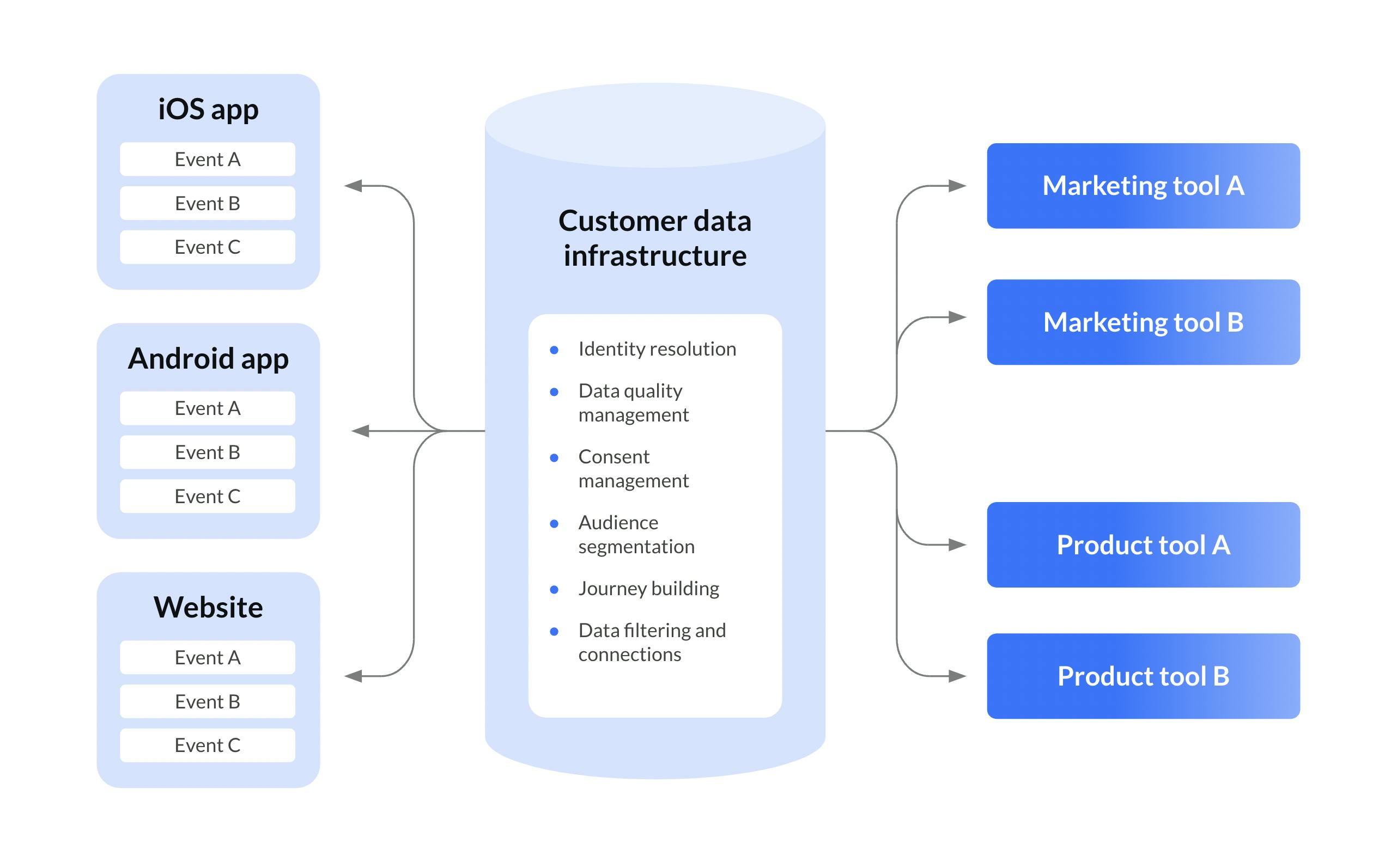
Organizationally, teams progress from operating with a cross-functional group collaborating on customer data processes to having a clear owner of the customer data infrastructure. This individual is responsible for liaising between data-implementing teams, such as data engineers, web developers, and app developers; and data-consuming teams, such as marketing and product management. They are also responsible for ensuring that the tools and processes in place allow data-consuming teams to use data to accomplish business goals while also optimizing engineering efficiency. The work of the customer data owner might include:
- Evaluating, selecting, and owning customer data infrastructure tooling
- Establishing Standard Operating Procedure to formalize the data request process
- Collaborating with business teams to help them leverage customer data in new and innovative ways
Building upon the advantages of a central hub for integrations, teams enact more custom controls over data forwarding, such as controlling the amount of data sent to a downstream tool, or the type of data based on user consent statuses. They can also leverage a variety of integration types, such as raw event forwarding, dynamic audience lists, and bi-directional data flows between the central data store and downstream tools.
By building audience segments in a central system and connecting them to multiple engagement tools, marketing is now able to deliver personalized experiences that are consistent across channels without support from engineering, improving customer lifetime value (CLTV) and time-to-value. And with a 360-degree view of the customer, teams can connect a conversion in one channel to a campaign delivered in another, increasing return on ad spend (ROAS).
Level 3: Advanced is by no means the end of the road. Advanced teams have the foundation and process in place to use customer data to deliver more sophisticated customer experiences.
In addition to resolving cross-device identities through deterministic identity resolution, teams can enrich customer profiles with data ingested from external data sources, such as customer support information. With a foundation of high-quality, deterministic customer profiles, brands may choose to layer on a probabilistic matching strategy to increase advertising reach.
And with data quality management, identity resolution, and data governance policies being enforced automatically, teams can leverage AI to generate insights, such as churn-risk, for each customer profile. These insights allow marketing teams to deliver personalization based not just on what a customer has done in the past, but furthermore what they are likely to do in the future.
As the organization begins to adopt more sophisticated customer data use cases, the owner of customer data begins to build out an advanced team to support the organization’s data needs. This team may include data engineers, product managers, and project managers, all working together to ensure data-consuming teams can work with customer data with high levels of speed, trust, adaptability, and collaboration. Data-consuming teams become more data-literate in their own right, improving the customer experience by testing and learning at greater frequency.
Marketing teams can also go beyond basic filtering and segmentation and begin designing multi-channel customer journeys—controlling how and when customer data flows to different downstream tools and optimizing the experience delivered on every platform.
Level of customer data maturity is the differentiator that separates the organizations that will win the market challenges of tomorrow from the organizations that will be stuck in the past. Whether you’re an early stage, high-growth company looking to set yourselves up for continued success, or an established company undergoing a digital transformation, it’s critical to implement a customer data infrastructure that facilitates speed, adaptability, trust, and collaboration.
